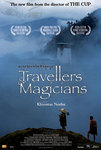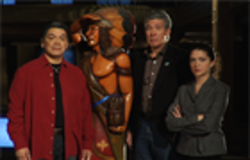Narrative Medicine and Psychology Resources
Lectures in Narrative Medicine
AIMED Lecture from 12 May 2011: http://tui.adobeconnect.com/p6smc37in64/
AIMED Discussion Group East Coast, Tuesday, 17 May 2011
AIMED Lecture from 19 May, 2011: http://tui.adobeconnect.com/p48t98n1v5o/
AIMED Discussion Group West Coast,Tuesday, 24 May 2011
AIMED Lecture from 26 May, 2011: http://tui.adobeconnect.com/p5i6np9u5j5/
AIMED Discussion Group East Coast, Tuesday, 31 May, 2011:
http://tui.adobeconnect.com/p2evq4p7jzh/
AIMED Lecture from 2 June, 2011: http://tui.adobeconnect.com/p3dz24rm4jr/
AIMED East Coast Discussion, June 7th, 2011: http://tui.adobeconnect.com/p86lmw11sth/
AIMED West Coast Discussion, June 7th, 2011: http://tui.adobeconnect.com/p5yufeaqu4n/
AIMED Lecture from 9 June, 2011: http://tui.adobeconnect.com/p6hmr7jyun0/
AIMED East Coast Discussion, 14 June, 2011, http://tui.adobeconnect.com/p7jk6dpui2j/
AIMED West Coast Discussion, June 14th, 2011: http://tui.adobeconnect.com/p60m8abmpt6/
AIMED Lecture from 16 June, 2011: http://tui.adobeconnect.com/
AIMED East and West Coast Discussion, June 21, 2011: http://tui.adobeconnect.com/p7ihw9rr6q0/
AIMED Lecture from 23 June, 2011: http://tui.adobeconnect.com/p3gge442byh/
Links from our Discussions
Link to Habits of the Heart: Individualism and Commitment in American Life. (2007). Robert Behllah, Richard Madsen, William Sullivan, Ann Swidler, Steven Tipton. Habits of the Heart (Google Book)
Link to Thomas King's I'm Not the Indian You Had in Mind
Link to the films listed tonight: Ten Canoes (the trailer)
Link to the article that discusses the way in which, when we talk story and listen to story together, Stories Synchronize Brains!
I'm not the Indian You Had in Mind Photo: NSI Canada
Director Thomas King says:
"I’m Not the Indian You Had in Mind challenges the stereotypical portrayal First Nations peoples in the media. This spoken word short offers an insight of how First Nations people today are changing old ideas and empowering themselves in the greater community.
The actors, in business suits, jeans, and typical urban attire are juxtaposed against the loincloth-wearing, tomahawk wielding Natives of yesterday’s spaghetti westerns.
Through the use of stock footage, language, and common artifacts like a cigar store Indian, the viewer is encouraged to examine the profound role that these one-dimensional media representations have played in shaping their perspectives of an entire group of people. The man living next door, the woman working in the next cubicle, or the stoic wood carving in front of the cigar store – which Indian did you have in mind?
From: http://www.nsi-canada.ca/i_m_not_the_indian_you_had_in_mind.aspx


